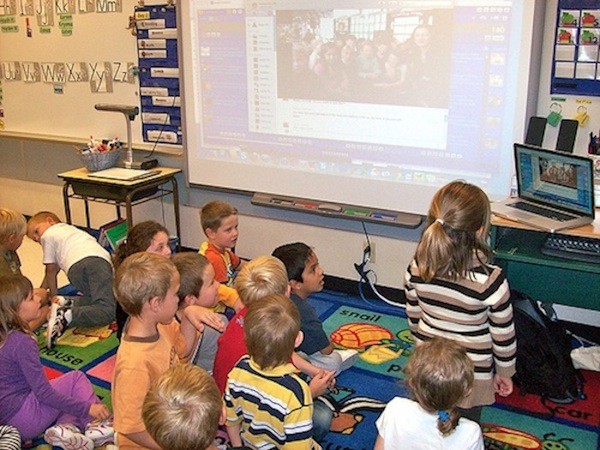Connecting the K-12 Classroom to the 21st Century

Justin Reich is a fifth year doctoral student at the Harvard Graduate School of Education studying the ways in which social media support the development of 21st century skills when used in K-12 settings. This past August, he was among a cohort of junior scholars who participated in the DML Research Associate Summer Institute, a week-long program funded by the DML Research Hub designed to support advanced graduate  students and postdoctoral scholars who are conducting research in the emerging field of digital media and learning. Reich is co-director of EdTechTeacher, a professional development firm dedicated to helping teachers and schools leverage technology to create student-centered learning environments, and he also serves as the project manager of the Distributed Collaborative Learning Community, a Hewlett Foundation funded initiative to study issues of excellence, equity and analytics in the use of social technologies in K-12 settings. His blog, EdTechResearcher, addresses these issues and features his latest large-scale quantitative study of more than 150,000 wiki learning environments. As a 2011-2012 Fellow at the Berkman Center for Internet and Society, Reich is looking to develop new ideas and collaborations to extend this research. In the video below, Reich describes the ability of online learning environments to record and retain real-time learning interactions between teachers, students and peers, and to open up possibilities for new forms of K-12 assessment. Here are just a few highlights from the video, but the full interview (below) is flush with analytical insights from this former social studies teacher.
students and postdoctoral scholars who are conducting research in the emerging field of digital media and learning. Reich is co-director of EdTechTeacher, a professional development firm dedicated to helping teachers and schools leverage technology to create student-centered learning environments, and he also serves as the project manager of the Distributed Collaborative Learning Community, a Hewlett Foundation funded initiative to study issues of excellence, equity and analytics in the use of social technologies in K-12 settings. His blog, EdTechResearcher, addresses these issues and features his latest large-scale quantitative study of more than 150,000 wiki learning environments. As a 2011-2012 Fellow at the Berkman Center for Internet and Society, Reich is looking to develop new ideas and collaborations to extend this research. In the video below, Reich describes the ability of online learning environments to record and retain real-time learning interactions between teachers, students and peers, and to open up possibilities for new forms of K-12 assessment. Here are just a few highlights from the video, but the full interview (below) is flush with analytical insights from this former social studies teacher.
One of the things that has been really striking to people is the degree to which social media tools have transformed many different sectors of the world - politics, economics, journalism - there are lots of good reasons to hypothesize that social media could transform education as well, but it has not happened.
Our research takes an approach of trying to do large-scale online content analysis. We take hundreds of thousands of online learning environments that are created across the world and then randomly sample from those environments.
I wake up in the morning with this vision of children sitting at desks, which are bolted to the floor while teachers talk at them... in learning environments where their full potentials aren’t being tapped. It’s profoundly painful to me, so I think of my research as a way to challenge teachers to give more responsibility to learners.
One of the exciting things about online learning environments is that they record in continuous time everything that students and teachers and educators and learners do in those environments - we've been thinking about referring to this kind of data as SCRIBL data - Scalable, Real-time, Individual Behavior and Learning data.
It’s a set of questions that unites us, questions that we approach from very different methodological perspectives, but it’s such a complicated field and is so globally transformative that it does require people with lots of different perspectives to be able to join the conversation...
Banner image credit: Kathy Cassidy
http://www.flickr.com/photos/57634636@N00/6148483767/in/photostream
Video credit: Marc Bacarro